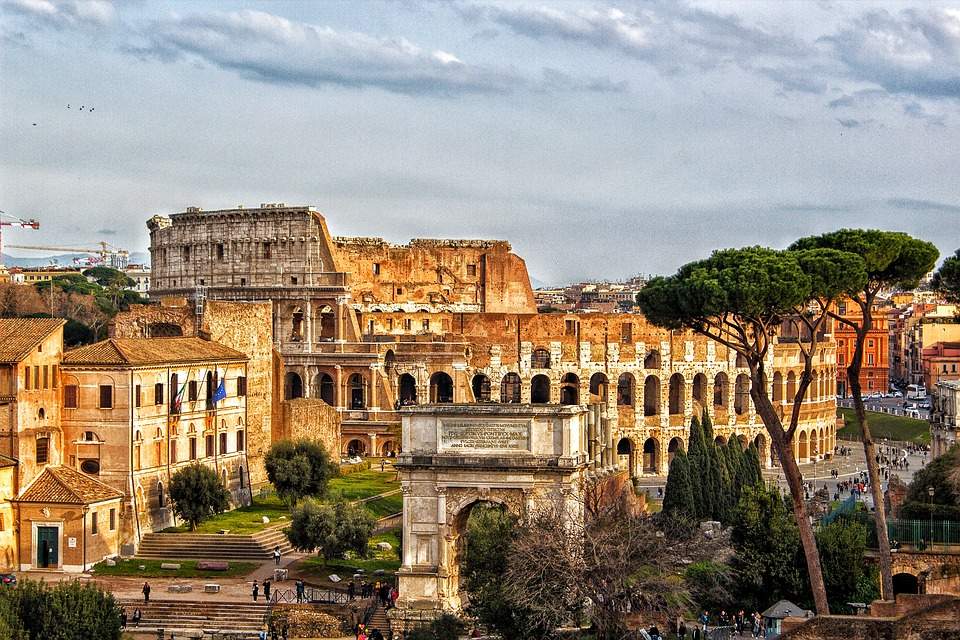Here are all the culture projects proposed for the Recovery Fund
The 557 candidate projects to enter the Italian plan for the Recovery Fund, the aid fund the European Union makes available to member states for the Covid emergency, have been submitted. Italy will have to make choices before submitting the final plan, which the government will send to Brussels in January. The projects have been put forward by the relevant ministries: for culture there are ten, worth just over 6 billion euros. In all, Italy will be able to get a maximum of 209 billion, while the total value of the projects submitted amounts to about 677 billion euros. A skimming will therefore be necessary. Here are the proposals for culture, with descriptions provided by the Ministry of Culture and Tourism.
1. Plan for the digitization of cultural heritage (2.5 billion euros over three years)
The Project being proposed is of strategic importance as it innervates and feeds the entire system of heritage, cultural activities and tourism as well as the complex of activities of the administration itself. The awareness that the digital revolution can radically improve both the efficiency of an entire system and the level of accessibility of the services offered has determined in recent years also in the MIBACT some important strategic choices, aimed at defining programs aimed at the application of ICT to three fundamental components of the system tourism - culture - heritage.
2. Extraordinary plan for energy efficiency in Museums and Places of Culture (500 million over three years).
The goal of a drastic containment of energy demand also fully involves public and private historical-architectural heritage, and in particular all cultural infrastructures and services that are highly energy-consuming due to the needs of air conditioning, lighting, communication, security, etc. In this context, as far as the state heritage is concerned, it will be a matter of giving continuity to an action that has already been underway for years, also in response to the need to contain public spending, while promoting, through financial and tax concessions, a vast intervention in energy efficiency in the private historical heritage.
3. Plan for earthquake-proofing of houses of worship (1 billion over three years)
The project proposes the largest ever seismic risk prevention intervention of cultural heritage assets, to be applied to a type of assets of particular vulnerability: churches and slender structures (bell towers and towers). The seismic issue applied to monumental heritage has been intensely debated on both the regulatory and technical-scientific and organizational sides. The past two decades have seen tremendous progress in all fields, with a wealth of normative production.
4. National integrated monitoring and risk prevention system for Italian cultural sites and places (€10 million).
The project systematizes some actions already tested in MiBACT sites (recognition scanners, video surveillance, wi-fi, RFID, telephone data) and establishes a National Functional Center that aggregates and analyzes data and information from satellite data and sensors, including those from the European and national earth observation systems Copernicus and COSMO-SkyMed, connected to MiBACT institutes, the constituted National Earth Observation Structure and the National Service of Civil Protection.
5. Cinema and audiovisual internationalization: strengthening (500 million)
The project aims to support the production chain within the film and audiovisual production industry, including by facilitating investment by foreign companies and operators. The support is aimed at the expansion and modernization of the domestic audiovisual supply chain; to this end, investment in the construction of facilities, studios and incubators for companies specializing in production and post-production is essential. Support for the supply chain structured on the basis of this design would give an absolutely major boost in the development of innovative technologies in the national territory, while at the same time encouraging the support and strengthening of artisan supply chains involved in audiovisual production.
6. National Villages Plan - Redevelopment of historic centers, villages, inland areas and rural heritage (1.7 billion over three years)
Enhance destinations that are not yet fully developed in terms of tourism but incredibly endowed with enormous natural, scenic and cultural potential so as to expand the country’s tourism-cultural offer by ensuring deseasonalization, mitigation of overtourism and greater economic impact of the sector.
7. Strengthening grants to private owners for restoration of cultural heritage (100 million).
The aim of the project is to implement the economic-financial participation of the state in the form of contributions for the execution, by the owner, possessor or holder, of conservation and restoration work on cultural heritage in order not only to ensure the protection of non-state assets of particular importance but also to promote their wider enjoyment for the benefit of the entire community, through the burden of their opening to the public as a counterpart for the granting of the contribution itself.
8. Decontribution of tourism workers (under development)
9. Tourism investments. Digitization and modernization of travel agencies and tour operators (100 million, under elaboration)
10. National 5G network (under elaboration)
 |
| Here are all the culture projects proposed for the Recovery Fund |
Warning: the translation into English of the original Italian article was created using automatic tools. We undertake to review all articles, but we do not guarantee the total absence of inaccuracies in the translation due to the program. You can find the original by clicking on the ITA button. If you find any mistake,please contact us.



























